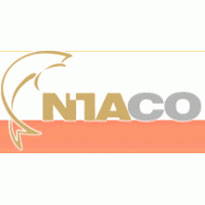Support online
Statistics Hits
Follow us
Using calcium in aquaculture
Update: 05-03-2016 08:03:27 + GMT7Aquaculture in general and in particular shrimp and fish farming, the formulation of the product quality and safety is one of the factors determining the success or failure of the business. Because more and more, consumers are demanding more in terms of quality, purity and safety of the product.
And to create products that clean, quality, the preparatory work before and during the breeding plays a very important role. Well prepared ponds, pond will create a good environment for fresh water shrimp, fish, increasing resistance and limit the use of antibiotics to affect the quality of shrimp, fish later.
Why lime used in aquaculture
Besides the expensive chemicals, the use of lime in the treatment ponds, shrimp ponds fish is still a top choice for growers because of the economy, but it brings that quality requirements are achieved suggest. Besides, the rural supply lime to handle quite as plentiful and easy to find.
The effects of the treatment lime shrimp ponds, fish
The majority of freshwater shrimp can live in water with a pH ranging from 6.5-8.5. When the water is too low pH (pH less than 5) with the expression as a country with a certain acidity, the amount of CO2 dissolved in water which means a large amount of low O2 led to the formation of anaerobic environment favorable for harmful microorganisms to grow. And in this case the use of lime to increase pH effect (reducing acidic) environment for creating favorable living conditions for fish and shrimp.
Also lime also work to destroy all kinds of trash fish and shrimp predation in aquaculture, algae and all kinds of germs, pathogens in ponds. Lime helps pond humus more biodegradable, made better by the pond bottom is mineralized, water quality is also improved, natural food of shrimp from which to develop richer.
Lime also work to provide calcium (Ca2 +) to create favorable conditions for development of shrimp in the shell formation process.
Classification of lime in the aquaculture environment treatment
Currently on the market there are the following types of lime:
1. Agricultural Lime: There is a chemical formula CaCO3. Made from limestone, coral, crushed seashells. The quality of this type of calcium varies depending on the impurities are mixed in. But as recommended, you should use the lime content of greater than 75% CaCO3. Smooth limestone is most suitable for shrimp ponds. Agricultural lime to lower alum, disinfection increases the buffering capacity of the water and can be used in large numbers by not affect the pH of water. Agricultural lime should be used to renovate the pond and the pond are breeding.
2. hydrated lime or lime: There is a chemical formula Ca (OH) 2 is produced by heating limestone at high temperatures (900 ° C range) then I with water.
The process is illustrated according to the following reaction equation:
CaCO3-> CaO + CO2
CaO + H2O-> Ca (OH) 2
3. limestone or quicklime with CaO chemical formula is: strong effect of increased pH pond only, not intended for fish and shrimp ponds are breeding.
4. Black or Dolomite Lime: There is CaMg chemical formula (CO3) 2, Mg content of about 4%. Black lime alum lowering effect and increase the buffer for the water system. Rearing ponds are used to. In addition to calcium, it also provides additional black lime magnesium is a mineral trace elements good for fish. The downside is that this type of lime cost quite expensive.
Using lime in aquaculture
In aquaculture, depending on the moment, the need to use the appropriate type of lime:
1. Lime used in the pond: Often used slaked lime CaCO3 or Ca (OH) 2 at a dose of 10-15 kg / 100m2. If the pond has a high alkaline (pH <5) should be used to treat alkaline lime CaO effectively.
2. Use lime to lower alum: When ponds contaminated by leaching alum or alum sauce from pond after rain, use lime with doses as follows:
For small fish ponds: use from 3-4 kg / 100 m2 mixed with water, sedimentation pond for water in breaking down (done many times).
For large fish ponds, shrimp: use about 1-2 kg / 100 m2 mixed with water and then thrown into the pond does not need clarification.
For cages: hanging bag, the dose of 2-4 kg / 10 m3 of friends, hang a small bag of the first flow
3. Liming to sink about colloidal organic matter.
After rains, the water containing the dirt, put down the remote line ponds and lakes make the pond water becomes cloudy. The lighting in the pond water restrictions led to the photosynthesis of plants under low pond, the pond environment becomes anaerobic. To make the water becomes clear again need about 1-2 kg / 100 m2 CaCO3 lime mixed with water and air in the entire area of the pond.
4. Periodic Liming: Usually 10-15 days should periodically agricultural lime into the pond 1 at a dose of 2-4 kg / 100 m2 to prevent epidemic, prevention is for fish.








